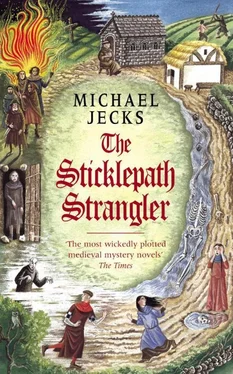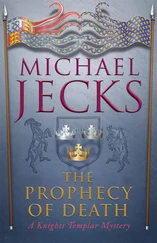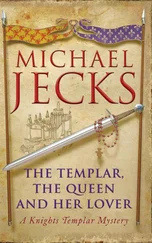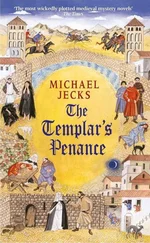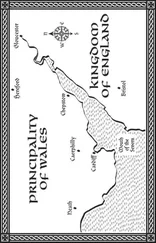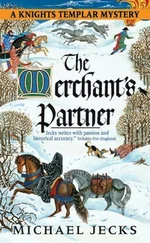There was no bypass for the hilly part of the road which gave the ‘Stickle’ or ‘Steep’ path its name until fairly recently. In fact, there are many local families who can still remember grandparents talking about the time when the road went up the hill.
In reality, it seems that the road has changed direction twice. If you walk along Sticklepath’s High Street heading westwards, you will come to a left-hand turn towards Higher Sticklepath and Belstone. Follow this, and only a matter of a couple of yards down from the road junction you will notice a narrow track on the right which has been partly metalled over. This is the start of the old Sticklepath, now replaced by the modern roadway itself which follows the countours of the hills towards Okehampton. Walk on up this old track a short way, and soon you’ll find that there is a flagpole on your left. Between this track and the ‘White Rock’ pole is a sunken pathway, now largely obliterated by bushes and straggling brambles, gorse and ferns, but clearly visible early in the year. This is the old Exeter to Cornwall road. And if you try to walk up it, you will see why it was necessary to build the new road, because, by God, it’s steep!
At the other end of the village is a relatively modern bridge. This would not have been here in the Middle Ages. However, before the bridge was built, the River Taw would have been easily fordable at that particular point. Often when bridges were thrown up over rivers, the builders then charged money for people to use them in order to recoup the cost of construction. And equally often, the more wily travellers would bypass the bridge and find a new ford. I think that this is what happened at the Taw. While there were charges for the use of the bridge, people went a little upriver along Skaigh Lane to where there was a ford, and when the charges were dropped, they returned to the new bridge and used it.
Like so many small settlements, there is little written down for Sticklepath during the Middle Ages. We know that there was a chantry chapel, which seems to have been established in the reign of Henry I, but there are no maps and few documents.
Apparently in 1147 Robert Fitzroy (illegitimate son of Henry I) and his wife Matilda d’Avranches gave lands to Bricius, Empress Matilda’s Chaplain, so that he could build a small chapel. It was to be called the church of ‘St Mary of Stikilpeth’ in the manor of ‘Saunforde Curtenay’ or ‘Sandy Ford’ over the Taw. Later, in 1282, Robert de Esse was installed as priest to the church by Hugh Courtenay. The latter’s son, Hugh II, provided ‘a messuage and one carucate of land’ to the two chaplains of the church. The messuage is thought to be where the present Chantry Cottage now stands, while I am told that there is still a field off the back lane called Chantry’s Meadow.
Sadly, though, there’s little proof of the precise location of the land, and nobody knows where the priest would have lived, nor how the vill would have been set out in those far-off days. All we can do is extrapolate what we know about other vills and use some logic to see what the place might have looked like, seven hundred years ago.
For those who are interested, the Sticklepath Women’s Institute has produced an excellent history which is available in the West Country Studies Library in Exeter.
There is one facet which will no doubt concern the casual reader, and that is my use of vampires. I know that I will be told off for bringing foreign bloodsuckers into my stories, so here is my defence.
Vampires were brought to the public’s mind by the marvellous story of Dracula, written by Bram Stoker. It is known that vampire stories were once quite common on the continent, especially in Transylvania and Slovenia, but it is less well known that such stories existed in England too.
The earliest examples I have found were written by Canon William of Newburgh (1136–98). He details four cases of sanguisugae or vampires in his account of English history: one in Buckinghamshire, and three others in the north of the country. Of course, the stories of vampirism covered a wide range of offences; it is only since the invention of Dracula that it came to mean drinking blood and nothing else. Before that, vampires were thought of as especially evil people, probably infested by demons, who would torment an area. Some accusations were undoubtedly malignant, made by neighbours who coveted a patch of land or a pig, perhaps; others derived from genuine fear and superstition.
The worst period, as one can imagine, came after a famine. We know that there was talk of cannibalism in the British Isles during the terrible famine of 1315–17, and to an ill-educated and starving population of peasants, it is no surprise that in order to explain away such a hideous and inconceivable crime, some might have suggested that a supernatural agency was responsible.
In this tale, I have taken only the details which Canon William wrote down. I have not invented these elements of the story, although I have of course elaborated on them. Some readers may be surprised by the exhumation scene. I can only say that the villagers’, Gervase’s and Baldwin’s views are borne out by research in several countries.
For those who are keen to find out more about the subject, look at Jean-Claude Schmitt’s excellent Ghosts in the Middle Ages .
There is one final point I must make. As always, this book states that all characters are fictitious and any resemblance to the living or the dead is entirely coincidental, and I should like to say here that I have been as careful as I possibly could be to avoid using the names, characteristics or features of any of my friends from Belstone, South Zeal or Sticklepath.
This is particularly important because, as with any work of crime fiction, so many of the folks in this book are unpleasant, motivated by questionable urges, with deceit, dishonesty, racism, adultery, greed and corruption forming a large part of their makeup. All I can say is, I have encountered none of these traits in any of the people of the area – and I hope that all my friends will understand that a crime book which features only pleasant, laughing and above all honest men and women like themselves, would make for a less than riveting read.
I cannot complete this note without expressing my immense gratitude to the people of the three villages who have made my family and me so welcome since we moved to Devon some years ago.
Our thanks to you all.
Michael Jecks
North Dartmoor
March 2001
Sticklepath, 1315
They were out there.
In the darkness about his cottage, as he sat inside, panting like a wounded dog, he knew they were silently gathering, like rats about carrion, and Athelhard shivered not only from the pain of his wounds, but from the knowledge that he was soon to be slaughtered and burned until nothing remained, nothing but the lie that he had killed the girl; that he had drunk her blood and eaten her flesh; that he was a sanguisuga – a vampire. It was that thought, more even than the pain, that made him snarl in defiance like a bear at bay in the pit.
His leg felt as if it had been savaged. The hole through his flesh was more painful than he could have imagined, a pulsing agony that produced a sort of deadening cramp in his groin. Not that it compared with the injury to his back. That was sharper, like a knife thrust. That was the one which would kill him, he knew. The arrowhead was lodged deeply, and he could feel his strength seeping away with his blood.
Why? he wondered again. Why attack him? Why think he could have done that to the girl?
The arrow in his leg heralded the attack.
He’d had no premonition all that long day he’d been at his holding, far on the western outskirts of the vill, peaceably chopping and storing logs in preparation for the winter. At the beech tree that marked the eastern edge of his plot, he set down his axe while he ducked his head in his old bucket and rubbed his hair. It had been hard work, and tiny chips and flakes of wood were lodged in his scalp, making the flea bites itch.
Читать дальше
